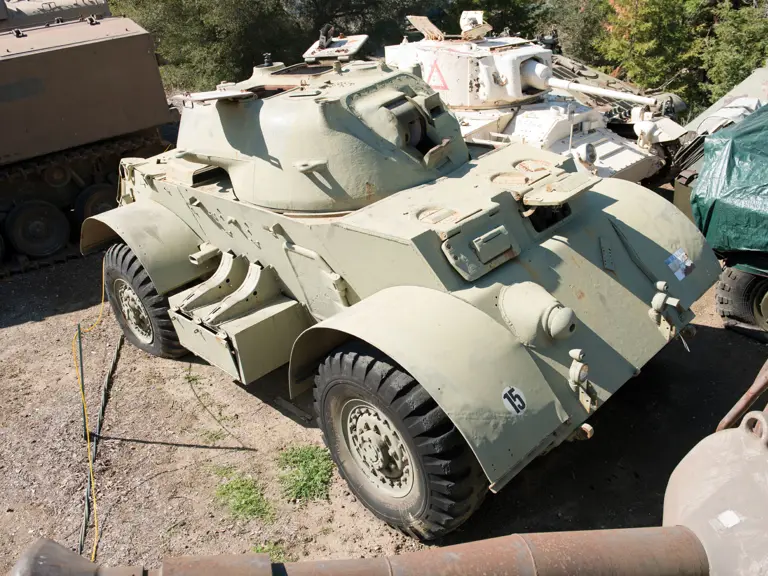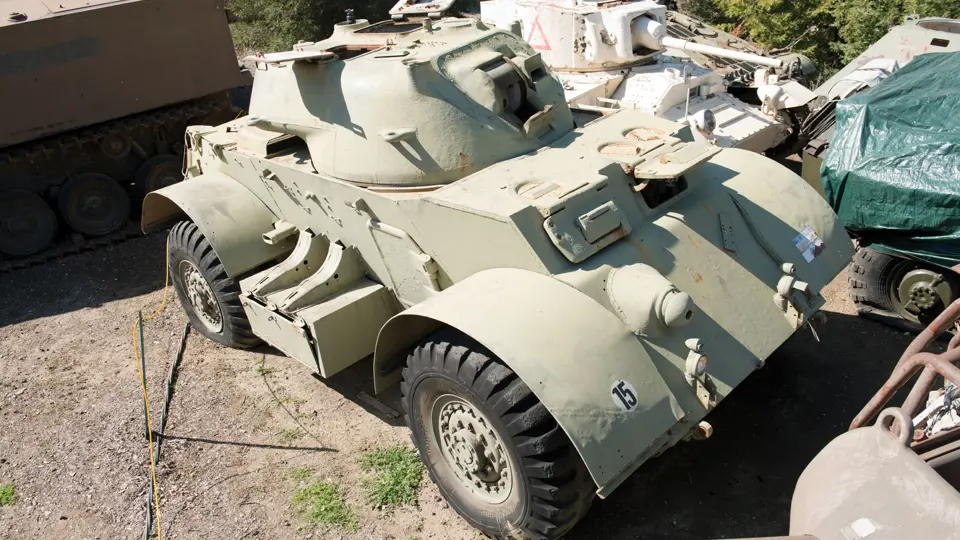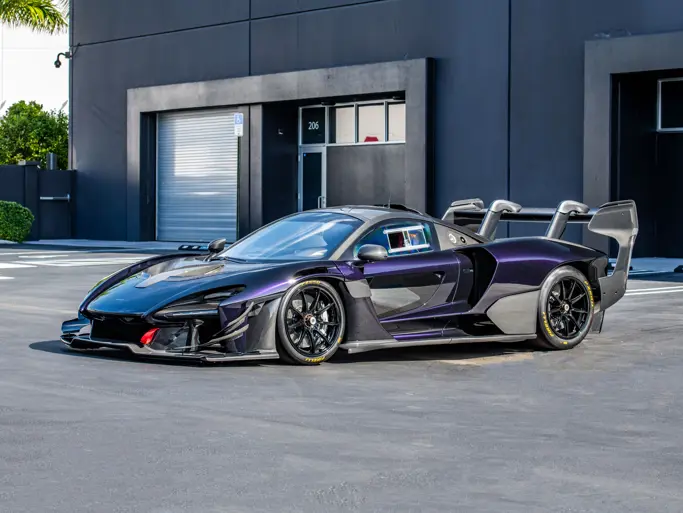 | Portola Valley, California
| Portola Valley, California
Weight: 15.4-tons (13,927-kg)
Length: 18' 0” (5.48-m)
Width: 8' 10” (2.69-m)
Height: 9' 4” (2.84-m)
Crew: 5
Armor:
Hull front: .875” (22-mm)
Turret front: 1.75” (44-mm)
Weapons:
-Primary
1x 37-mm Gun M6
-Secondary
3x .30-cal M1919A4 machine gun
-Ammunition
103x 37-mm
5,250x .30-cal
Engine: 2x GMC 270 6-cylinder,194-hp (97/engine)
Power/weight: 12.6-hp/ton
Fuel Capacity: 138-USG: 62-USG internal and 2x 38-USG jettison tanks (378-l)
Range: 450-miles (724-km)
Speed: 55-mph (88-km/h)
The vehicle being offered, T17E1 Staghound Armored Car, serial number unknown, has a very good outside appearance. It will need a complete interior restoration along with a rebuild or replacement of all drive parts. The original engine has been replaced, albeit with an Oldsmobile V-8. The transmission, radiators and fuel tanks are missing. The dashboard and gauges are present. All hatches appear to operate normally.
The Spring of 1941 saw the British Purchasing Commission submit a requests for medium and heavy armored cars. This was combined with a request from the Armored Force Board, which too had submitted specifications for similar vehicles. Both Ford and Chevrolet submitted designs. The Ford vehicle was a six-wheeled vehicle and was designated the T17. The Chevrolet was a four-wheeled car and was designated T17E1.
The T17E1 pilot vehicle was delivered to Aberdeen Proving Ground in March 1942. After testing that revealed many, but easily correctable component failures, the vehicle was accepted for production in the late summer of 1942. Production began in October 1942 and ended in December 1943 with 2,844 T17E1's being built, all of which were allocated to the British. As the U.S. never officially used it, the vehicle was never type classified, although “armored car M6” was at one time proposed.
The Staghound was big for an armored car, as it had been designed for desert use. While issued to many British and British Commonwealth recce units, it was thought of as too large for use in France and Italy. An anti-aircraft version, the T17E2 was produced during the war. There were also various in-theater conversions done by British and British Commonwealth units. Post-war, it was used by many countries including Belgium, Lebanon, Nicaragua and several others.
Transport Cost to Storage: $1,848





